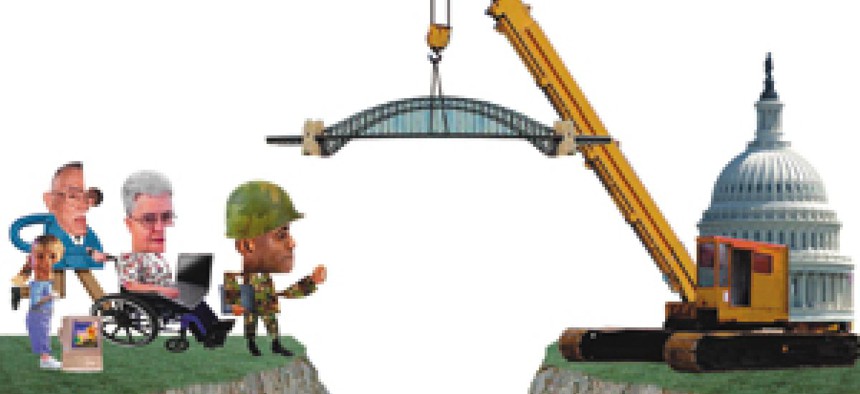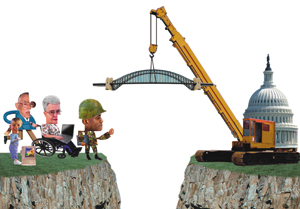ND narrows digital divide

With more than 345,000 citizens living outside a metro area, North Dakota is making headway in conquering the digital divide.
With more than 345,000 citizens living outside a metro area, North Dakota is making headway in conquering the digital divide.Through a $2.4 million grant from the General Services Administration, the University of North Dakota's College of Business and Public Administration is reaching out to senior citizens, veterans and residents of the state's rural parts to teach them how to use the Internet and access federal and state services online.As the project enters its second phase, North Dakota and federal officials hope to gain a better understanding of the barriers that exist and ways to overcome them to encourage more residents to use government services online."When you work on a project with a national scope, things can get complicated," said John Moore, a GSA program analyst in the Electronic Government Office. "This project has given us a different perspective and helped us to think about how we need to change our approach to reach citizens."In the initial phase, the project team set up training and desktop PCs in locations such as libraries, computer stores and small technology centers to provide service in 29 counties.Glenn Miller, director of the Government Rural Outreach Initiative at the university, said each location had Dell OptiPlex PCs with high-speed connections. Project officials also bought software from TecSec Inc., a Vienna, Va., information security company, to encrypt the personal data collected. The project partners offered training classes and online access. Libraries were some of the more successful training locations, Miller said."We helped the libraries recruit and train citizens, plus libraries provided additional access to the Internet through their own computers," he said.GSA has established multiagency teams to make sure the services are set up so people in urban and rural areas understand how to use them.The project revealed that citizens want a compelling reason to use online services, Miller said.The project team set up portals for seniors, veterans and other communities, which offer links to federal and state government services. Miller said users are more likely to use state services, which offer benefits such as renewing a hunting license or registering a car, rather than informational services offered by the federal government, such as the Govbenefits.gov site."Government services must be relevant, especially for the new user," Miller said. "If users don't get a direct benefit from the service, they will not go back."The project team is using the second phase to broaden outreach to rural citizens. For instance, Miller said he has signed up 27 of 53 county veterans services officers to help promote the Veterans Portal. These 27 officers, who serve about 75 percent of the state's veterans, will register and work with vets to use online services."The intent is to get them to the point where they are comfortable with the Internet," Miller said. "We want to use the officers' knowledge of their customers to improve the portal by offering more services."Miller said he would like to find similar people in the senior and Native American communities to act as points of contact to increase Internet use.Miller holds hope for a possible third phase, which could include videoconferencing to deliver government services.The project has provided some valuable lessons for future outreach initiatives, Miller said.GSA's Moore said other states might apply for the grants as well. "These lessons learned provide a valuable information for people in public service to approach this issue," he said. Jason Miller is a staff writer with Government Computer News. E-mail him at jmiller@postnewsweektech.com.


Michael Bechetti
- Rural communities often lack the technical infrastructure to access the Internet through a broadband connection.
- Miller said wireless might be an option worth looking into.
- New Internet users cannot be trained as casual users. They must understand the dangers of viruses and spam, and they need a support network to answer questions.
- Government services must be relevant to users. The services must deliver direct benefits to users.
- Communities must learn how to use technology to provide services instead of just offering access.